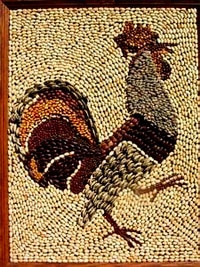 By JOHN BARTLIT
By JOHN BARTLIT
New Mexico Citizens
for Clean Air & Water
Lentils Consort With Commoners And Kings
“Victuals”, which sounds the same as “vittles”, is a dandy word to resurrect around Thanksgiving. It means food or food provisions. The word goes way back, so it companions well with foods from way back, as with lentils.
Since the earliest days of farming, lentils have been on both ends of the Cinderella story. “Both ends” means both before and after Cinderella shone like magic at the prince’s ball. Lentils have been a settled asset in the humblest of homes and also brought glory to the grandest affairs in the realm. Throughout history, lentils have stood well with people of every kind—the poor, the plain, and kings alike.
Lentils were farmed in West Asia as far back as 10,000 B.C. They reached Greece by 6,000 B.C., where they were seen as a poor man’s food. Across the Mediterranean in Egypt, the remains of lentils were found in the royal tombs at Thebes dating to 2,400 B.C. History shows that our staple food items generally came to global markets either by spreading first among royalty or among the people. Pineapples went with the royals; the potato went with the people. But, lentils went both ways equally well. Any good trait of this kind is a built-in plus for society.
Today, the big producers of lentils are Canada and India, which together produce 58 percent of the world total. Think how strange this is. Canada and India are two very different countries. They have very different cultures, very different population densities, in very different climate zones. Lentils grow well under widely varied conditions, which is good for farming in more places.
Foods that were commonplace in biblical times tend to start traditions. Lentils fill this basic need in notably varied ways. Catholics found lentils to be a tasty substitute for eating fish on Friday. Lentils also work well in Lenten meals, although their names are not related. Some Jewish homes have lentils on New Years Day, as a trusted way to bring a year of prosperity. This notion may hint at the coin-like shape of lentils. Others say the name “lentil” in fact refers to the lens-like shape of lentils. Such different perspectives come from the branching out that people do.
The secret of lentils is in their natural qualities. Lentils get high marks for affordable nutrition, yet are tasty and filling. Over centuries, people slowly learn more about foods. Lentils are now known to be a good source of protein, fiber, B vitamins, molybdenum, iron, and zinc. Lentils also store well for long periods, which helps people get through tough times.

Lentils come in many colors—black, yellow, orange, brown, red, and green. Each has distinct uses known in culinary arts. If you look at lentils as small dots of different colors, which they are, you might guess that lentils have been used in decorative arts. You would be right.
History has seen notable ventures and governments rise and fall. Meanwhile, almost every decade, the annual world production of lentils sets a new all-time record. This long run of success is a testament to common appetites.
Rarely are lentils in the news. Much of their charm is in simply being lentils.

